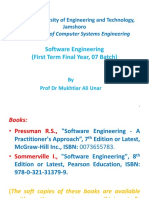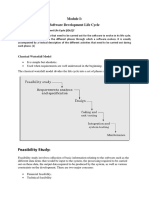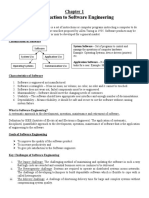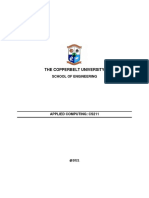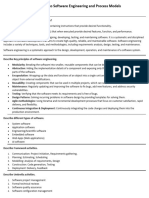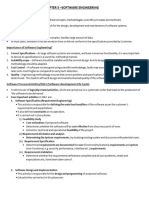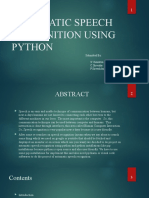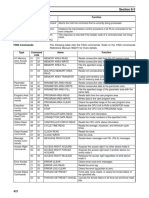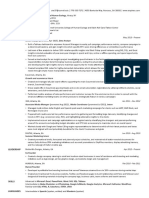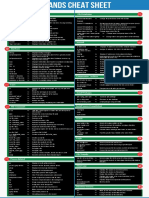0% found this document useful (0 votes)
25 views8 pagesSoftware Engineering Important
The document outlines the Software Development Life Cycle (SDLC), detailing its phases such as planning, analysis, design, implementation, testing, deployment, and maintenance, along with various models like waterfall, prototype, agile, spiral, and V-model. It also discusses the importance of Software Requirement Specifications (SRS), elicitation analysis, feasibility studies, and visual tools like data flow and entity-relationship diagrams in software engineering. Additionally, it highlights the software crisis and the advantages and disadvantages of the SDLC model.
Uploaded by
Mohammad ZaidCopyright
© © All Rights Reserved
We take content rights seriously. If you suspect this is your content, claim it here.
Available Formats
Download as PDF, TXT or read online on Scribd
0% found this document useful (0 votes)
25 views8 pagesSoftware Engineering Important
The document outlines the Software Development Life Cycle (SDLC), detailing its phases such as planning, analysis, design, implementation, testing, deployment, and maintenance, along with various models like waterfall, prototype, agile, spiral, and V-model. It also discusses the importance of Software Requirement Specifications (SRS), elicitation analysis, feasibility studies, and visual tools like data flow and entity-relationship diagrams in software engineering. Additionally, it highlights the software crisis and the advantages and disadvantages of the SDLC model.
Uploaded by
Mohammad ZaidCopyright
© © All Rights Reserved
We take content rights seriously. If you suspect this is your content, claim it here.
Available Formats
Download as PDF, TXT or read online on Scribd
/ 8































